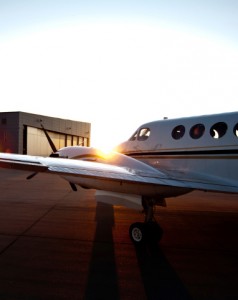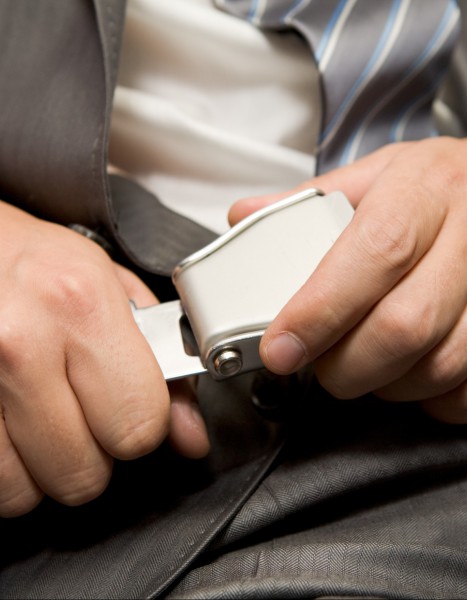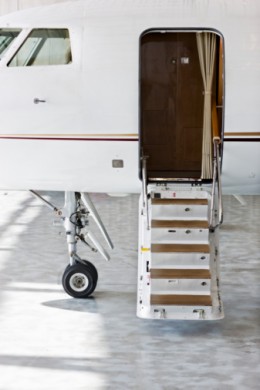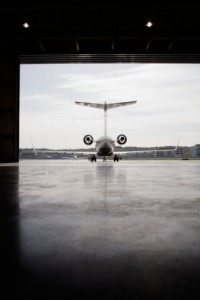[et_pb_section admin_label=”Section” fullwidth=”on” specialty=”off” background_image=”https://www.l-lint.com/wp-content/uploads/2016/03/slider_1_1.jpg” transparent_background=”off” allow_player_pause=”off” inner_shadow=”off” parallax=”off” parallax_method=”off” padding_mobile=”off” make_fullwidth=”off” use_custom_width=”off” width_unit=”on” make_equal=”off” use_custom_gutter=”off”][et_pb_fullwidth_header admin_label=”Fullwidth Header” title=”CORPORATE JET INSIDER” background_layout=”light” text_orientation=”center” header_fullscreen=”off” header_scroll_down=”off” background_url=”https://www.l-lint.com/wp-content/uploads/2016/03/slider_1_1.jpg” background_overlay_color=”rgba(255,255,255,0.82)” parallax=”off” parallax_method=”off” content_orientation=”center” image_orientation=”center” custom_button_one=”off” button_one_letter_spacing=”0″ button_one_use_icon=”default” button_one_icon_placement=”right” button_one_on_hover=”on” button_one_letter_spacing_hover=”0″ custom_button_two=”off” button_two_letter_spacing=”0″ button_two_use_icon=”default” button_two_icon_placement=”right” button_two_on_hover=”on” button_two_letter_spacing_hover=”0″] [/et_pb_fullwidth_header][/et_pb_section][et_pb_section admin_label=”section”][et_pb_row admin_label=”row”][et_pb_column type=”3_4″][et_pb_post_title admin_label=”Post Title” title=”on” meta=”on” author=”off” date=”on” categories=”on” comments=”off” featured_image=”off” featured_placement=”below” parallax_effect=”on” parallax_method=”on” text_orientation=”left” text_color=”dark” text_background=”off” text_bg_color=”rgba(255,255,255,0.9)” module_bg_color=”rgba(255,255,255,0)” title_all_caps=”off” use_border_color=”off” border_color=”#ffffff” border_style=”solid”] [/et_pb_post_title][et_pb_text admin_label=”Text” background_layout=”light” text_orientation=”left” use_border_color=”off” border_color=”#ffffff” border_style=”solid”]
 What does it cost to own and operate a private jet? While buying your own private aircraft is about having the freedom to fly wherever and whenever you need to, the cost of operating that business tool is about more than just the price of the plane and the fuel to fly. Take a look at this list of costs that you will need to consider, depending on how often you fly and what features you want to have on each flight.
What does it cost to own and operate a private jet? While buying your own private aircraft is about having the freedom to fly wherever and whenever you need to, the cost of operating that business tool is about more than just the price of the plane and the fuel to fly. Take a look at this list of costs that you will need to consider, depending on how often you fly and what features you want to have on each flight.
- Annual insurance premium — Just like your vehicle, home, or boat, it’s necessary to have insurance on your private jet. The cost of insuring your plane is similar to your car. It takes into consideration replacement value and miles flown each year.
It also has an additional factor — the pilot. Most people who buy a private jet are not the pilot of that jet, and if other people are allowed to fly the plane, they are typically named on the airplane insurance policy. The insurance company will want to know that the named pilots are qualified and will base your premium on their flight records, hours in the air, and other specifics.
- Storage — Whether you choose to house your plane in a hangar or tie it down on the runway when it’s not in flight, storing your plane costs money, just like a parking space.
- Maintenance costs — Again, just like a vehicle on the ground, your plane will need regular maintenance. You can typically get a good idea of the recommended maintenance schedule from the manufacturer, and the costs will depend on the provider you choose.
If you park your plane near where the maintenance and repair facility is located, you can often save a little by being a frequent customer. In addition, don’t forget to calculate the cost of the annual inspection.
- Salaries and benefits for the crew — Depending on how often you fly, you may want a consistent pilot and crew, versus the “rent a crew” option. Your crew may be employees of your company or another; either way, you’ll need to consider how much that will cost.
- Take-off and landing fees — Any plane that lands at an airport must pay a landing fee, based on maximum takeoff weight, which can vary dramatically from airport to airport.
- Catering — If you are hosting guests and want to wow them, you might want to factor in catering options. These costs may include food, ice, alcohol, and other options that aren’t normally stored on board. Don’t forget to consider children or pets! Likely, they will need special accommodations.
Private jet ownership means leaving your personal belongings on board and having your jet ready to leave when you want to leave. You control who does and does not fly or ride on your aircraft. You get to hand-pick the staff and customize the aircraft as you desire.
Still, there is no magic formula for figuring out the total cost of private jet ownership. It depends on the aircraft, how often and how you fly — and your personal choices.
Contact L & L International if you need assistance in purchasing or selling a private jet.
You can reach our sales specialists today at sales@L-Lint.com, call us anytime at +1.305.754.3313, or visit us online.
[/et_pb_text][/et_pb_column][et_pb_column type=”1_4″][et_pb_sidebar admin_label=”Sidebar” orientation=”right” area=”sidebar-1″ background_layout=”light” remove_border=”off”] [/et_pb_sidebar][/et_pb_column][/et_pb_row][/et_pb_section]
[et_pb_section admin_label=”Section” fullwidth=”on” specialty=”off” background_image=”https://www.l-lint.com/wp-content/uploads/2016/03/slider_1_1.jpg” transparent_background=”off” allow_player_pause=”off” inner_shadow=”off” parallax=”off” parallax_method=”off” padding_mobile=”off” make_fullwidth=”off” use_custom_width=”off” width_unit=”on” make_equal=”off” use_custom_gutter=”off”][et_pb_fullwidth_header admin_label=”Fullwidth Header” title=”CORPORATE JET INSIDER” background_layout=”light” text_orientation=”center” header_fullscreen=”off” header_scroll_down=”off” background_url=”https://www.l-lint.com/wp-content/uploads/2016/03/slider_1_1.jpg” background_overlay_color=”rgba(255,255,255,0.82)” parallax=”off” parallax_method=”off” content_orientation=”center” image_orientation=”center” custom_button_one=”off” button_one_letter_spacing=”0″ button_one_use_icon=”default” button_one_icon_placement=”right” button_one_on_hover=”on” button_one_letter_spacing_hover=”0″ custom_button_two=”off” button_two_letter_spacing=”0″ button_two_use_icon=”default” button_two_icon_placement=”right” button_two_on_hover=”on” button_two_letter_spacing_hover=”0″] [/et_pb_fullwidth_header][/et_pb_section][et_pb_section admin_label=”section”][et_pb_row admin_label=”row”][et_pb_column type=”3_4″][et_pb_post_title admin_label=”Post Title” title=”on” meta=”on” author=”off” date=”on” categories=”on” comments=”off” featured_image=”off” featured_placement=”below” parallax_effect=”on” parallax_method=”on” text_orientation=”left” text_color=”dark” text_background=”off” text_bg_color=”rgba(255,255,255,0.9)” module_bg_color=”rgba(255,255,255,0)” title_all_caps=”off” use_border_color=”off” border_color=”#ffffff” border_style=”solid”] [/et_pb_post_title][et_pb_text admin_label=”Text” background_layout=”light” text_orientation=”left” use_border_color=”off” border_color=”#ffffff” border_style=”solid”]
 Over 60 years ago, when the federal standards regarding the strength of airplane seats and passenger safety belts were established, the average passenger weight was recorded as 170 pounds. The typical American man now weighs nearly 200 pounds and the average American woman 165.
Over 60 years ago, when the federal standards regarding the strength of airplane seats and passenger safety belts were established, the average passenger weight was recorded as 170 pounds. The typical American man now weighs nearly 200 pounds and the average American woman 165.
Engineers and scientists have recently begun raising questions about whether airplane safety belts and seats — which are tested with 170-pound crash dummies — are strong enough to protect heavier travelers. In theory, if a seat collapsed or a safety belt failed, not just one passenger would be hurt. Those nearby could also be endangered by the unrestrained motion of the unsecured passenger who was too heavy for the equipment.
In 2005, the Federal Aviation Administration (FAA) updated the average passenger weights used in calculating every flight’s weight and balance. That summer, calculations were raised to 200 pounds for men and 179 for women, with higher weights for the winter when passengers wear heavier clothing.
While the width of airline seats is restricted by the width of the airplane body, the airline seat construction may not be strong enough to withstand the impact of heavier passengers on those seated behind them, simply because the testing protocols have not been updated. So far, much of the attention on air travel for larger passengers has been drawn to whether they need to purchase two seats.
The National Transportation Safety Board (NTSB) did recommend that the FAA begin collecting data about the size and weight of passengers flying in private planes to better understand whether the testing accurately predicts the effectiveness of seat restraints. The NTSB has not addressed the issue on commercial planes because investigators haven’t encountered any accidents in which passenger weight was a factor in being able to escape injury in a crash.
Equal safety, however, does not mean equal comfort. As airlines further restrict seat size to maximize paying customers, an adapted seat has been designed by SII Deutschland. This innovative design is one and a half times as large as the standard seat to accommodate wider passengers and the needs of toddlers traveling with an average-sized parent. These larger seats, as well as “comfort bookings” in which a traveler purchases two seats, are aimed at overweight passengers, but are available to passengers of all sizes, as well as those flying with children. Still other airlines have considered basing charges on each traveler’s weight.
While passengers focus on issues of comfort and the NTSB focuses on safety, it’s clear these juxtaposed forces agree that the testing regulations need to be updated to verify safety for all travelers with the presence of heavier passengers.
Contact L & L International if you need assistance in purchasing or selling a private jet. You can reach our sales specialists today at sales@L-Lint.com, call us any time at +1.305.754.3313, or visit us online.
[/et_pb_text][/et_pb_column][et_pb_column type=”1_4″][et_pb_sidebar admin_label=”Sidebar” orientation=”right” area=”sidebar-1″ background_layout=”light” remove_border=”off”] [/et_pb_sidebar][/et_pb_column][/et_pb_row][/et_pb_section]
[et_pb_section admin_label=”Section” fullwidth=”on” specialty=”off” background_image=”https://www.l-lint.com/wp-content/uploads/2016/03/slider_1_1.jpg” transparent_background=”off” allow_player_pause=”off” inner_shadow=”off” parallax=”off” parallax_method=”off” padding_mobile=”off” make_fullwidth=”off” use_custom_width=”off” width_unit=”on” make_equal=”off” use_custom_gutter=”off”][et_pb_fullwidth_header admin_label=”Fullwidth Header” title=”CORPORATE JET INSIDER” background_layout=”light” text_orientation=”center” header_fullscreen=”off” header_scroll_down=”off” background_url=”https://www.l-lint.com/wp-content/uploads/2016/03/slider_1_1.jpg” background_overlay_color=”rgba(255,255,255,0.82)” parallax=”off” parallax_method=”off” content_orientation=”center” image_orientation=”center” custom_button_one=”off” button_one_letter_spacing=”0″ button_one_use_icon=”default” button_one_icon_placement=”right” button_one_on_hover=”on” button_one_letter_spacing_hover=”0″ custom_button_two=”off” button_two_letter_spacing=”0″ button_two_use_icon=”default” button_two_icon_placement=”right” button_two_on_hover=”on” button_two_letter_spacing_hover=”0″] [/et_pb_fullwidth_header][/et_pb_section][et_pb_section admin_label=”section”][et_pb_row admin_label=”row”][et_pb_column type=”3_4″][et_pb_post_title admin_label=”Post Title” title=”on” meta=”on” author=”off” date=”on” categories=”on” comments=”off” featured_image=”off” featured_placement=”below” parallax_effect=”on” parallax_method=”on” text_orientation=”left” text_color=”dark” text_background=”off” text_bg_color=”rgba(255,255,255,0.9)” module_bg_color=”rgba(255,255,255,0)” title_all_caps=”off” use_border_color=”off” border_color=”#ffffff” border_style=”solid”] [/et_pb_post_title][et_pb_text admin_label=”Text” background_layout=”light” text_orientation=”left” use_border_color=”off” border_color=”#ffffff” border_style=”solid”]
 Buying a corporate jet can be an excellent move for businesses for many reasons. As with any major purchase, however, there is a wrong way to go about it. For the smoothest purchase process possible, keep in mind and avoid these common mistakes.
Buying a corporate jet can be an excellent move for businesses for many reasons. As with any major purchase, however, there is a wrong way to go about it. For the smoothest purchase process possible, keep in mind and avoid these common mistakes.
- Treat a business jet purchase like a car deal. An aircraft purchase takes weeks or even months — you can’t simply waltz into a dealership and negotiate a good price, then drive off the lot as a happy new jet owner. Private jet purchases are complicated deals that require you to identify your needs and then research to determine the right aircraft to meet those needs — and that’s just the beginning. Be prepared to put in the time and effort necessary for a successful purchase.
- Fail to compare all your options. With a firm grasp of exactly the business requirements that need to be met through a private aircraft purchase, it is imperative that you rigorously compare all your options, including charters, fractional ownership, whole ownership, and the like. Only with an open mind can you make the right decision for your organization’s situation.
- Focus solely on purchase cost. An aircraft costs more than simply the purchase price. Buyers need to understand capital and operating costs, and ensure they budget conservatively for maintenance and upgrades.
- Skim jet logs and records. Failure to conduct a thorough evaluation of jet logs and records for preowned aircraft spells danger. Dig into documentation, which should be complete and comprehensive, and include components with a limited life cycle, records of maintenance programs to ensure they conform to manufacturer and industry best practice recommendations, and damage history.
- Entertain the expectation that an aircraft will appreciate. The value of an aircraft should be viewed through its benefits to the organization, rather than as an appreciable investment. Buyers can expect their aircraft to depreciate at least 5% each year.
Finally, the biggest mistake that first-time and inexperienced jet buyers make is to go it alone. All of these common mistakes can be sidestepped through the guidance of experienced and knowledgeable professional assistance. Help from L & L International’s brokerage services will not only help you avoid pitfalls, but also ensure the details are addressed and your organization finds the right jet at the right price.
Contact L & L International if you need assistance in purchasing or selling a private jet. You can reach our sales specialists today at sales@L-Lint.com, call us any time at +1.305.754.3313, or visit us online.
[/et_pb_text][/et_pb_column][et_pb_column type=”1_4″][et_pb_sidebar admin_label=”Sidebar” orientation=”right” area=”sidebar-1″ background_layout=”light” remove_border=”off”] [/et_pb_sidebar][/et_pb_column][/et_pb_row][/et_pb_section]
[et_pb_section admin_label=”Section” fullwidth=”on” specialty=”off” background_image=”https://www.l-lint.com/wp-content/uploads/2016/03/slider_1_1.jpg” transparent_background=”off” allow_player_pause=”off” inner_shadow=”off” parallax=”off” parallax_method=”off” padding_mobile=”off” make_fullwidth=”off” use_custom_width=”off” width_unit=”on” make_equal=”off” use_custom_gutter=”off”][et_pb_fullwidth_header admin_label=”Fullwidth Header” title=”CORPORATE JET INSIDER” background_layout=”light” text_orientation=”center” header_fullscreen=”off” header_scroll_down=”off” background_url=”https://www.l-lint.com/wp-content/uploads/2016/03/slider_1_1.jpg” background_overlay_color=”rgba(255,255,255,0.82)” parallax=”off” parallax_method=”off” content_orientation=”center” image_orientation=”center” custom_button_one=”off” button_one_letter_spacing=”0″ button_one_use_icon=”default” button_one_icon_placement=”right” button_one_on_hover=”on” button_one_letter_spacing_hover=”0″ custom_button_two=”off” button_two_letter_spacing=”0″ button_two_use_icon=”default” button_two_icon_placement=”right” button_two_on_hover=”on” button_two_letter_spacing_hover=”0″] [/et_pb_fullwidth_header][/et_pb_section][et_pb_section admin_label=”section”][et_pb_row admin_label=”row”][et_pb_column type=”3_4″][et_pb_post_title admin_label=”Post Title” title=”on” meta=”on” author=”off” date=”on” categories=”on” comments=”off” featured_image=”off” featured_placement=”below” parallax_effect=”on” parallax_method=”on” text_orientation=”left” text_color=”dark” text_background=”off” text_bg_color=”rgba(255,255,255,0.9)” module_bg_color=”rgba(255,255,255,0)” title_all_caps=”off” use_border_color=”off” border_color=”#ffffff” border_style=”solid”] [/et_pb_post_title][et_pb_text admin_label=”Text” background_layout=”light” text_orientation=”left” use_border_color=”off” border_color=”#ffffff” border_style=”solid”]
 Aviation history has been made with the world’s first solar-powered airport. In India’s southern state of Kerala, Cochin International Airport operates completely on solar power, making the airport absolutely power neutral. In fact, the 46,000 solar panels laid across 45 acres produce somewhere near 48,000 units of electricity per day, meaning Cochin actually makes more power than it uses. The excess power generated by the huge solar panel field boosts the state’s electricity grid. Over the next 25 years, the solar airport is expected to save 300,000 tons of carbon emissions — the equivalent of planting three million trees or erasing the environmental impact of driving 750 million miles.
Aviation history has been made with the world’s first solar-powered airport. In India’s southern state of Kerala, Cochin International Airport operates completely on solar power, making the airport absolutely power neutral. In fact, the 46,000 solar panels laid across 45 acres produce somewhere near 48,000 units of electricity per day, meaning Cochin actually makes more power than it uses. The excess power generated by the huge solar panel field boosts the state’s electricity grid. Over the next 25 years, the solar airport is expected to save 300,000 tons of carbon emissions — the equivalent of planting three million trees or erasing the environmental impact of driving 750 million miles.
“When we had realized that the power bill is on the higher side, we contemplated possibilities. Then the idea of tapping the green power came in,” V.J. Kurian IAS, Managing Director of Cochin International, explains. “We consume around 48,000 units (kwh) a day. So if we can produce the same, that too by strictly adhering to the green and sustainable development model of infrastructure development that we always follow, would transcend a message to the world. Now this has become the world’s first airport that fully operates on solar power.”
Cochin is not alone in making the move to greener energy. Terminal 2 of London’s Heathrow Airport incorporates solar power, as does Denver International Airport. When the new international airport in Mexico City is completed in 2018, it will be the most sustainable airport in the world.
These cost-effective and extremely efficient sustainable-energy systems are garnering the world’s attention, hopefully inspiring similar environmental moves across the entire air travel industry.
Contact L & L International if you need assistance in purchasing or selling a private jet. You can reach our sales specialists today at sales@L-Lint.com, call us any time at +1.305.754.3313, or visit us online.
[/et_pb_text][/et_pb_column][et_pb_column type=”1_4″][et_pb_sidebar admin_label=”Sidebar” orientation=”right” area=”sidebar-1″ background_layout=”light” remove_border=”off”] [/et_pb_sidebar][/et_pb_column][/et_pb_row][/et_pb_section]
 Things are starting to look up for business aviation in China as industry analysts expect an increase in business in 2015.
Things are starting to look up for business aviation in China as industry analysts expect an increase in business in 2015.
Having only recently been introduced to Chinese markets, business aircraft sales have already been a roller-coaster ride as economic and political factors wreak havoc on the industry’s stability. A peak in 2009 with robust sales of large-cabin jets lead to a recent trough, which combined with the country’s slowing economy and austerity measures to slow orders of business jets of all sizes. Now, things are starting to look up for business aviation in China.
Many of China’s wealthy buyers have had strong reasons to keep a low profile in the past, while their government pursued corrupt officials as part of an anti-luxury movement. Despite the increase in wealth in the country — with the number of billionaires in China projected to increase to over 1,000 in 2017 — buyers were quick to back down from their intended purchases of aircraft when they became a symbol of excessive wealth.
In 2012 strong optimism prompted expectations for the number of business aircraft in China to grow by 30% between 2011 and 2015. Unfortunately, in 2014, customer orders decreased by half compared to the prior year and expectations were foiled.
But as the number of Chinese business jet order numbers continue to steadily climb in 2015, the industry hopes there will be stronger economic movement. In the past year, the Shanghai Composite Index nearly doubled, reaching a seven-year high.
For the time, Chinese politics have cooled off and the government has begun to encourage companies in China to invest abroad. There is hope that long-range private aircraft will be considered valuable business tools instead of needless luxury items.
There is also a growing presence of international aviation business in China. Textron Aviation’s Cessna Aircraft division recently formed a joint venture with China Aviation Industry General Aircraft Co. — a subsidiary of Aviation Industry Corporation of China — to launch charter and business aviation management services in the country next year. The Wichita-based aircraft innovator, which includes Cessna, Beechcraft, and Hawker aircraft brands, sees China as an emerging market important to future growth.
Experts are watching the recent upturn in the Chinese market as a sign that indicates worldwide business aviation is on the rise once more.
Contact L & L International if you need assistance in purchasing or selling a private jet.
You can reach our sales specialists today at sales@L-Lint.com, call us any time at +1.305.754.3313, or visit us online.
 The private jet market is relatively new in China. Between 2009 and 2012, China’s mushrooming economic growth meant that increasing numbers of the population were able to amass large personal fortunes — and the market for new private jets was robust. Before 2013, no resale market existed for business jets in China, but since then at least two major Chinese companies have sold their corporate jets at a loss. The demand for private jets has drastically decreased, and industry experts predict a continued decline in 2015.
The private jet market is relatively new in China. Between 2009 and 2012, China’s mushrooming economic growth meant that increasing numbers of the population were able to amass large personal fortunes — and the market for new private jets was robust. Before 2013, no resale market existed for business jets in China, but since then at least two major Chinese companies have sold their corporate jets at a loss. The demand for private jets has drastically decreased, and industry experts predict a continued decline in 2015.
Corruption crackdown curbs jet ownership
One reason for the decline may be Chinese citizens’ reaction to their government’s recent crack downs on corruption. Despite the fact that many business aviation companies market their planes as efficiency tools, the public has long regarded jet ownership as a way to help government officials and business people collaborate on illegitimate business deals. The complicated interrelationship between business people and government officials in China does little to destroy this illusion.
A frugal mood
Another reported reason for the decline in favor may have something to do with the public problems of Chinese comic star, Zhao Benshan. Zhao has recently been plagued with rumors that his fortunes are fading, that his family was planning to emigrate out of China, and that his works have been banned in some countries. Zhao purchased a private jet — one of the Challenger series from Bombardier Aerospace — for 200 million yuan ($32 million U.S.) in 2009, but reportedly asked to return the jet after being hospitalized.
Zhao later gave up on the idea of returning the jet when he learned that he would take a large financial loss on the deal. The topic later resurfaced in late 2014 as continued rumors of his fall from official favor — combined with hints that Zhao might donate his jet to the government — have continued to influence the private jet market. The situation has resulted in a kind of butterfly effect. As long as the central government of China is stressing frugality in hard economic times, the wealthy will be compelled to postpone their purchase of a private jet and even withdraw their orders to avoid drawing unpleasant attention to themselves.
Chinese jets may flood the market
What does the frugal Chinese mood mean for the private jet market in China? Forbes writer, Russell Flannery, reports that both existing jet owners and would-be first-time buyers of private jets are now reluctant to invest in such luxury items. The government crackdown on corruption and a creeping “anti-luxury” sentiment under Chinese President Xi Jinping has caused a lot of second thoughts among the wealthy. The current mood in a country of such previous economic growth is emphasizing frugality, and owners of private jets are less willing to show off their pricey symbols of wealth in such a time.
As a result, up to 20% of China’s existing private jet fleet, including their corporate jets, could be going up for sale in 2015. Buyers in other nations could snag some great deals while the Chinese market looks bleak for new jet sales.
Contact L & L International if you need assistance in purchasing or selling a private jet.You can reach our sales specialists today at sales@L-Lint.com, call us any time at +1.305.754.3313, or visit us online.
 Who hasn’t played Monopoly? The perennially popular board game hasn’t gone out of style yet — in fact, it has gotten a lot more stylish. Zontik, an online retailer of high-end games, offers a Monopoly set elegant enough to inspire deals worthy of any real estate mogul.
Who hasn’t played Monopoly? The perennially popular board game hasn’t gone out of style yet — in fact, it has gotten a lot more stylish. Zontik, an online retailer of high-end games, offers a Monopoly set elegant enough to inspire deals worthy of any real estate mogul.
The sides of the game board and storage box are made of hand-bound Dauphin calfskin and feature detailed scalloped plinth and 70 gold- or silver-embossed inlays. Game pieces are available in your choice of pewter, sterling silver, or silver-gilt, and two ball-cornered precision dice come with leather dice cups.
Even the bank boxes are tastefully done, with a leather rule envelope and money separators. The faux currency is the same as in more pedestrian Monopoly sets — but with a set this opulent, you might want to play with real money.
The set is priced at $5,737 to $14,161, depending on which game pieces you choose. Additional customization options are available.
When you turned your back on commercial flights, it’s likely that you were thrilled to leave behind intrusive (and perhaps pointless) security procedures, long slow lines, unpredictable delays, noisy flights, and of course, one of the worst parts — dry, flavorless airplane food. Of course, now the commercial flights have even eliminated that, and passengers file onto the plane clutching their fast food and making the whole plane smell like french fries.
We bet you don’t miss a minute of it.
On your private jet, however, the food you enjoy and the food you have in-flight don’t have to be different. You wouldn’t accept a boring and tasteless meal on the ground, so why do it in the air? Especially when there are so many catering options available to you.
You have choices for in-flight catering
In-flight catering companies used to be rare, but then, so were private jets once. These days, you can get some truly exceptional food service — plus you don’t have to worry whether your special dietary restrictions are noted by the flight attendant. In-flight catering can offer anything from simple sandwiches and fruit and cheese plates to sushi and rare wines.
As you well know, every jet is different and some don’t have the ability to heat food — just to refrigerate it. Others have galleys, but they are certainly not as well-equipped as the kitchen in your home. No matter what your jet’s capabilities, you’ll need to inform your private chef or catering company about the features they have to work with so they can design the right in-flight dining service for you.
Of course, galley makeovers are a budding trend, and a welcome enhancement in jet interior refurbishment — you might consider one if you think you’ll be doing a lot of in-flight dining.
The options you get in-flight are likely to be more expensive than any catering you’ve had in the past, since meals need to be prepared and stored differently in the limited space available in an aircraft. But on a long flight or when there are children aboard or when you want to impress a client or potential business partner, in-flight catering can be well worth the effort. After all, fine dining in the air used to be one of the most talked-about features of commercial flights.
After an eight-month delay in engine certification, Honda Aircraft’s first jet is back on track for release.
The company recently announced that the jet’s GE Honda Aero HF120 engine is certified and it has received the FAA-issued Type Inspection Authorization (TIA). The certification process, which will ensure that the jet meets certain type design requirements before it is available for purchase, is almost complete.
Over the past few years, HondaJet flight test engineers have flown hundreds of hours in certification to test the aircraft, and the jet looks to be meeting promised levels of performance.
The jet carries six passengers and costs about $4.5 million. Upon certification, this light jet will be the fastest in its segment by about 15 knots and have a top cruising speed of 420 knots.
The HondaJet has a variety of other innovative features:
- A unique over-the-wing engine mount configuration that dramatically improves performance and fuel efficiency by reducing drag
- Two GE Honda HG120 turbofan jet engines, which are highly fuel-efficient
- A sophisticated ergonic flight deck with Honda-customized Garmin® G3000 next-generation avionics and 14-inch landscape-formatted displays and dual touch-screen controllers
- Nonstop flight for up to 1,180 nautical miles (for reference, it is 2,127 nautical miles from NYC to Los Angeles.)
There is just one final step necessary in the certification: FAA pilots must perform onboard flight testing.
And that’s not all the news for Honda Aircraft: Their customer service facility at Piedmont Triad International Airport (KGSO) in Greensboro, N.C., also recently received FAA Part 145 approval.
Honda Aircraft expects to begin delivering the first HondaJets in early 2015.
In just the past five years, the Chinese aviation market has really taken off. Bloomberg notes that there are now more than 330 private planes in China, and buyers are expected to purchase 40 private jets in 2013, compared with 27 ordered in 2012. Business jet buyers in China have very specific tastes: large and new.
Going the distance
They prefer large, long-range aircraft; trips of 3,000 to 4,500-plus miles are common for regional users. In fact, according to an April article in Aviation Week, 61% of mainland China’s business aircraft are large, super-large, or ultra-long-range jets, or they’re corporate adaptations of airliners. The main aircraft in Chinese business fleets are the big ones, including larger Gulfstreams, Dassaults, and adapted Airbuses and Boeings.
A major influence on this market is a cultural factor: Owning a private jet has become a symbol of wealth for Chinese owners, and preowned aircraft simply won’t do. This market is interested in custom interiors that reflect the buyers’ affinity for luxury.
Global influence
Exactly how will Chinese taste in aircraft affect the global market? It’s too early to tell for certain. The Chinese government has permitted private jet ownership only since 2003. Complicating forecasts is the difficulty in predicting how quickly Chinese buyers will upgrade their aircraft. The market is too new to reveal turnover times, but it is likely that owners will not want to be seen flying around in the same jet for more than six or seven years.
With this in mind, many industry insiders expect that Chinese buyers’ preferences will likely create a large supply of secondhand aircraft. These jets could be exported to other countries, such as the U.S., that have more robust and established preowned jet markets. Another possibility is that used aircraft may become more appealing to Chinese purchasers. As more Chinese businesses begin acquiring business jets, the considerably shorter wait time, smaller price tag, and value of a preowned aircraft could boost the market.
Without a crystal ball, predicting the influence of the vigorous Chinese private jet market is a difficult task. However, with China forecasted to become the world’s third-biggest private jet market by as early as 2022, one thing is certain: This is a market to watch.

 What does it cost to own and operate a private jet? While buying your own private aircraft is about having the freedom to fly wherever and whenever you need to, the cost of operating that business tool is about more than just the price of the plane and the fuel to fly. Take a look at this list of costs that you will need to consider, depending on how often you fly and what features you want to have on each flight.
What does it cost to own and operate a private jet? While buying your own private aircraft is about having the freedom to fly wherever and whenever you need to, the cost of operating that business tool is about more than just the price of the plane and the fuel to fly. Take a look at this list of costs that you will need to consider, depending on how often you fly and what features you want to have on each flight.


 Things are starting to look up for business aviation in China as industry analysts expect an increase in business in 2015.
Things are starting to look up for business aviation in China as industry analysts expect an increase in business in 2015. The private jet market is relatively new in China. Between 2009 and 2012, China’s mushrooming economic growth meant that increasing numbers of the population were able to amass large personal fortunes — and the market for new private jets was robust. Before 2013, no resale market existed for business jets in China, but since then at least two major Chinese companies have sold their corporate jets at a loss. The demand for private jets has drastically decreased, and industry experts predict a continued decline in 2015.
The private jet market is relatively new in China. Between 2009 and 2012, China’s mushrooming economic growth meant that increasing numbers of the population were able to amass large personal fortunes — and the market for new private jets was robust. Before 2013, no resale market existed for business jets in China, but since then at least two major Chinese companies have sold their corporate jets at a loss. The demand for private jets has drastically decreased, and industry experts predict a continued decline in 2015. Who hasn’t played Monopoly? The perennially popular board game hasn’t gone out of style yet — in fact, it has gotten a lot more stylish. Zontik, an online retailer of high-end games, offers a Monopoly set elegant enough to inspire deals worthy of any real estate mogul.
Who hasn’t played Monopoly? The perennially popular board game hasn’t gone out of style yet — in fact, it has gotten a lot more stylish. Zontik, an online retailer of high-end games, offers a Monopoly set elegant enough to inspire deals worthy of any real estate mogul.